J-20 goes operational again
- Elite 3K

- Posts: 3069
- Joined: 07 Jun 2012, 02:41
- Location: Singapore
tphuang wrote:There is no way J-20 production rate in 2020 was already over 40. It would require a bump from 8 to 12 in 2016 to over 40 in 4 years. Let's say, they did something like 10 in 2016, 15 in 2017, 20 in 2018, 30 in 2019, there should have been 75 delivered by 2020 and probably 90 by now (since they typically do 2 deliveries a year). There simply aren't that many J-20s around.
176 & 172 Bde started equipping in 2016 & 2017. 9 Bde only started equipping in 2019. With only a flight of 8 in each training/aggressor bde, that means ~16 built in the 4 years from 2016-2019 so LRIP is ~4 a year which is a slight step up from the production for the test units (1-2 a year). I don't think 9 Bde is fully equipped even though a 2nd Bde may have been noted in 2020. So I would currently estimate ~12 annual as a lower boundary. That is consistent with early J-10 production before they ramped up to ~30 annual FRP. At FRP, a new J-10 Bde was noted every year. We can agree ~24-30 J-20s a year if a 3rd Bde is noted in 2021.
- F-16.net Moderator

- Posts: 1892
- Joined: 21 Oct 2005, 00:47
Someone posted these saying this jet has the thrust vectoring WS-15 engine installed.



Another person saying these photos are of the first J-20 production model with WS-10C engines installed.





Another person saying these photos are of the first J-20 production model with WS-10C engines installed.


I'm watching...
- Elite 5K

- Posts: 5334
- Joined: 20 Mar 2010, 10:26
- Location: Parts Unknown
Looks enormous, likely due to the amount of fuel/weapons it'll need in the SCS.
It sure doesn't look like a dogfight machine, so perhaps the Chinese have come to the same realization we have - stealth, sensors and weapons are far more important. The Russians have clearly gone in the other direction with the SU-57, which I'll be shocked if the Chinese buy it... especially without its 2nd stage engine.
Interesting design, I think it was modeled off the Mig 1.44. I thought that aircraft looked dynamite, and could have carried on Mig's legacy. That's apparently where it ended though, as nothing Mig's putting out today interests me (or the Chinese), I'm sure LOL.
It sure doesn't look like a dogfight machine, so perhaps the Chinese have come to the same realization we have - stealth, sensors and weapons are far more important. The Russians have clearly gone in the other direction with the SU-57, which I'll be shocked if the Chinese buy it... especially without its 2nd stage engine.
Interesting design, I think it was modeled off the Mig 1.44. I thought that aircraft looked dynamite, and could have carried on Mig's legacy. That's apparently where it ended though, as nothing Mig's putting out today interests me (or the Chinese), I'm sure LOL.
- Elite 2K

- Posts: 2323
- Joined: 27 Feb 2008, 23:40
- Location: Serbia, Belgrade
mixelflick wrote:It sure doesn't look like a dogfight machine, so perhaps the Chinese have come to the same realization we have - stealth, sensors and weapons are far more important. The Russians have clearly gone in the other direction with the SU-57, which I'll be shocked if the Chinese buy it... especially without its 2nd stage engine.
Yes Russians go with stealth proven direction (something between F-22 and F-23):

while J-20:

doesn't look nothing like F-22/23
We can argue about small order for Su-57 but saying it isn't design as stealth airframe is nonsense.
- Elite 3K

- Posts: 3069
- Joined: 07 Jun 2012, 02:41
- Location: Singapore
If the J-20 isn't intended to dogfight, why put PL-10s onboard?
- Elite 5K

- Posts: 5334
- Joined: 20 Mar 2010, 10:26
- Location: Parts Unknown
weasel1962 wrote:If the J-20 isn't intended to dogfight, why put PL-10s onboard?
Same reason we put sidewinders on F-111's, A-10's and F-35's .... last ditch, self defence.
As for the Felon having no stealth, that's not what I implied. What I did imply, was that its design clearly prioritizes speed, range and "super-maneuverability" over stealth. This chasm in stealth between the SU-57 and F-22/35 is large IMO, but I'll concede it goes the other way too. Meaning the Felon is going to see an F-15EX, Typhoon or F-16V first and likely dispatch with them in short order.
I think it's a great plane, really do. But when you're publicly stating the RCS is akin to a SH, you're starting off way behind the 8-ball. At least when compared to the F-22/35. Perhaps the production version will be stealthier than advertised. If that was really the case though, I think the Indians would still be throwing money at it. They aren't, which says a lot IMO...
- Elite 2K

- Posts: 2323
- Joined: 27 Feb 2008, 23:40
- Location: Serbia, Belgrade
mixelflick wrote:I think it's a great plane, really do. But when you're publicly stating the RCS is akin to a SH, you're starting off way behind the 8-ball.
Saying Su-57 is same as F-18SH is nonsense just from logical point of view, Su-57 is book example of stealth shape while F-18SH is attempt to make non stealthy airframe smaller on radar.
But how than we have Su-57=F-18SH RCS? Well simple someone didn't understand what mean RCS value mean.
- Elite 3K

- Posts: 3069
- Joined: 07 Jun 2012, 02:41
- Location: Singapore
mixelflick wrote:weasel1962 wrote:If the J-20 isn't intended to dogfight, why put PL-10s onboard?
Same reason we put sidewinders on F-111's, A-10's and F-35's .... last ditch, self defence.
The Chinese could have done it the same way as the F-35s and leave CCMs on the pylons. Instead they designed a bay specifically for the PL-10, which could have added 2 more PL-15s. Its a design choice and it could be something that could be exploited. The F-35 driver carrying only internal AIM-120s won't be tempted to a close-in fight. The J-20 might, which may be to its disadvantage. And if it doesn't, then the sidebays end up wasted space/weight.
- Elite 4K

- Posts: 4492
- Joined: 23 Oct 2008, 15:22
weasel1962 wrote:mixelflick wrote:weasel1962 wrote:If the J-20 isn't intended to dogfight, why put PL-10s onboard?
Same reason we put sidewinders on F-111's, A-10's and F-35's .... last ditch, self defence.
The Chinese could have done it the same way as the F-35s and leave CCMs on the pylons. Instead they designed a bay specifically for the PL-10, which could have added 2 more PL-15s. Its a design choice and it could be something that could be exploited. The F-35 driver carrying only internal AIM-120s won't be tempted to a close-in fight. The J-20 might, which may be to its disadvantage. And if it doesn't, then the sidebays end up wasted space/weight.
The F-35 pilot (in a few years) carrying Peregrines internally, won't have that same dilemma.
- Elite 2K

- Posts: 2582
- Joined: 12 Jan 2014, 19:26
milosh wrote:Yes Russians go with stealth proven direction (something between F-22 and F-23):
while J-20:
doesn't look nothing like F-22/23
We can argue about small order for Su-57 but saying it isn't design as stealth airframe is nonsense.
The Su-57 may look like a good example for stealth shaping but when looked at more closely, it has designs features that compromise what could be an outstanding LO design.
Pretty sure we've discussed here before but I will reiterate...
Its IRST is an obvious give away.
The F-35's EOTS is both faceted and treated with radar absorbent properties.
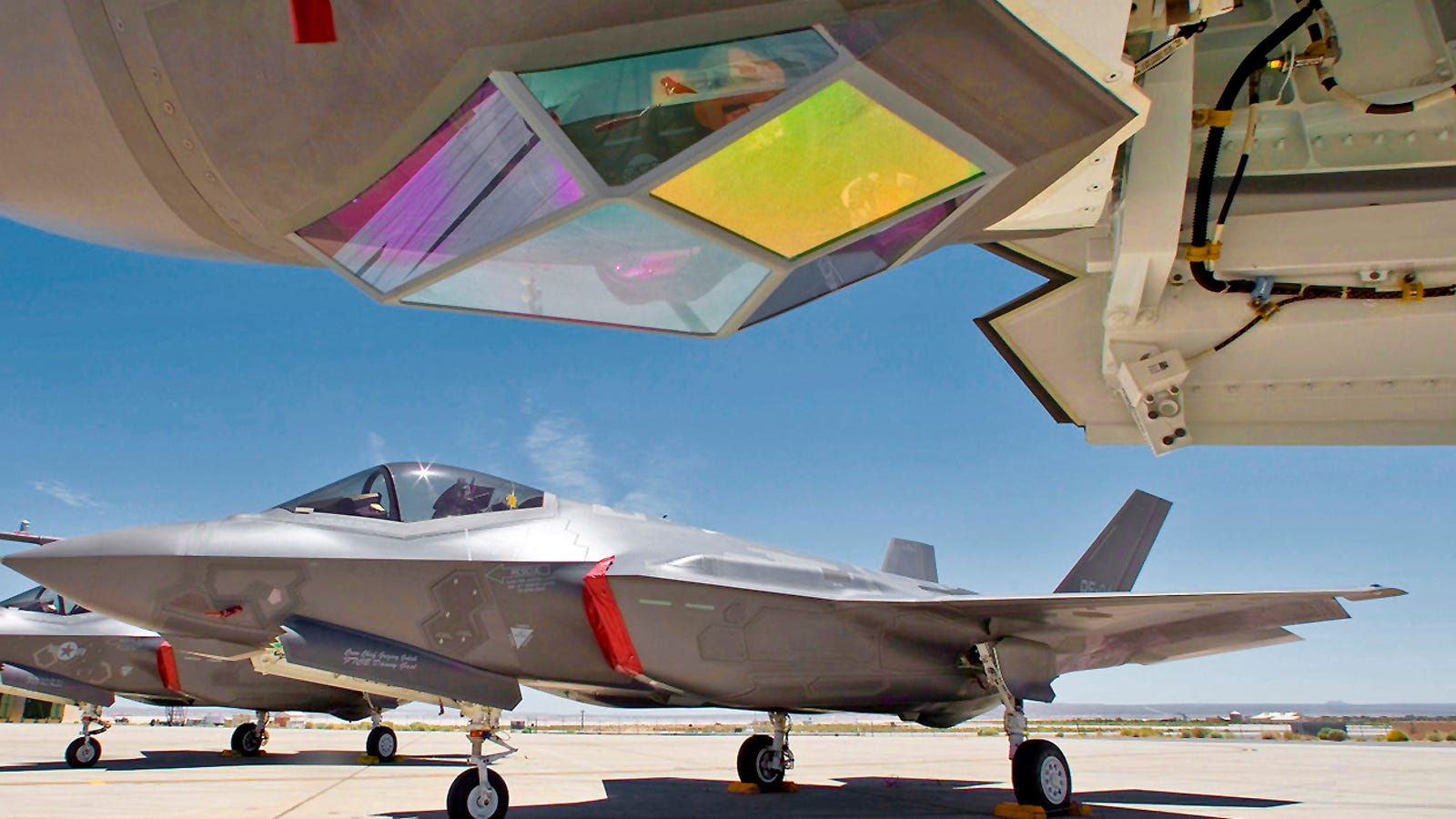
The Chinese J-20 takes cue from the F-35 in mimicing the design...
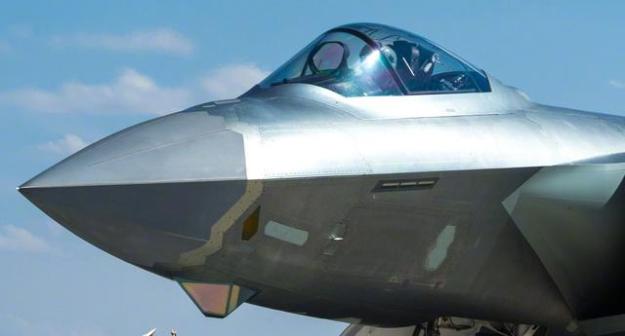
Despite the F-117 having a round node for its FLIR, and being limited by computer modeling at the time; it was buried, hidden inside a faceted compartment, and had a angled cover also treated with RAM
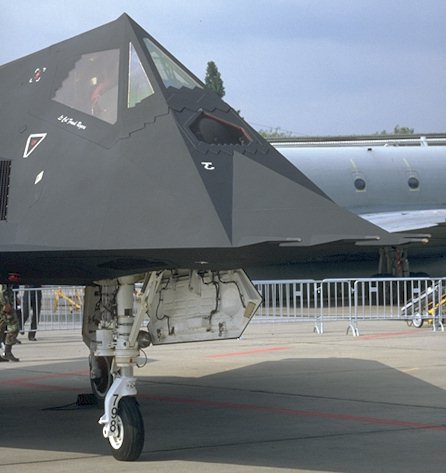
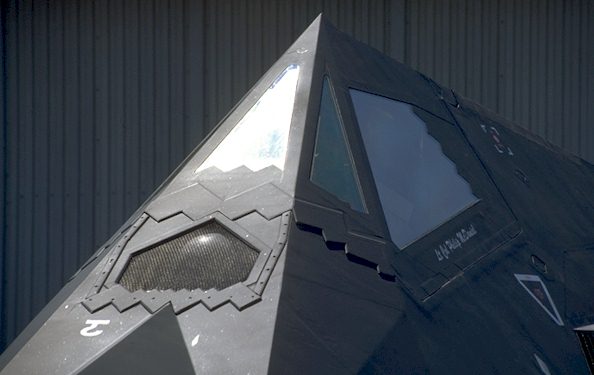
When looked at from the side the FLIR housing for the F-117 appears flush with the outline of the aircraft.

The same cannot be said of the Su-57. While others have claimed it is treated with RAM, its shape is not the most opitimal nor is its placement on the aircraft.
Another thing that stands out that comprises its stealth is its engine nacelle design. Both F-22 and J-20 attempt to have a flush, smooth, and uniform fuselage to reduce their RCS.
F-22

J-20
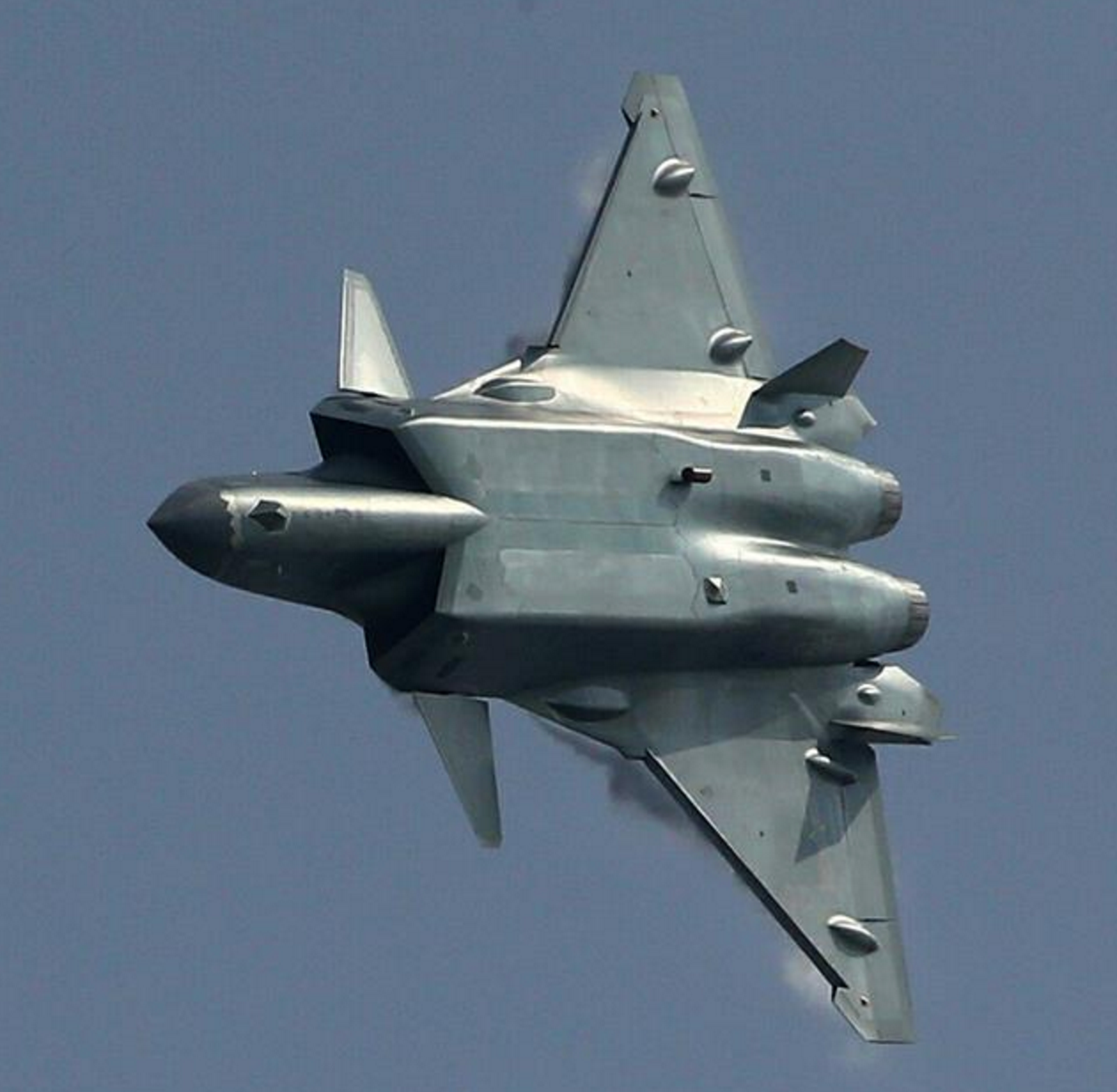
The YF-23 has a relatively flat and smooth surface

The Su-57 on the other has seperated engine nacelles offer more reflective surfaces for radar waves
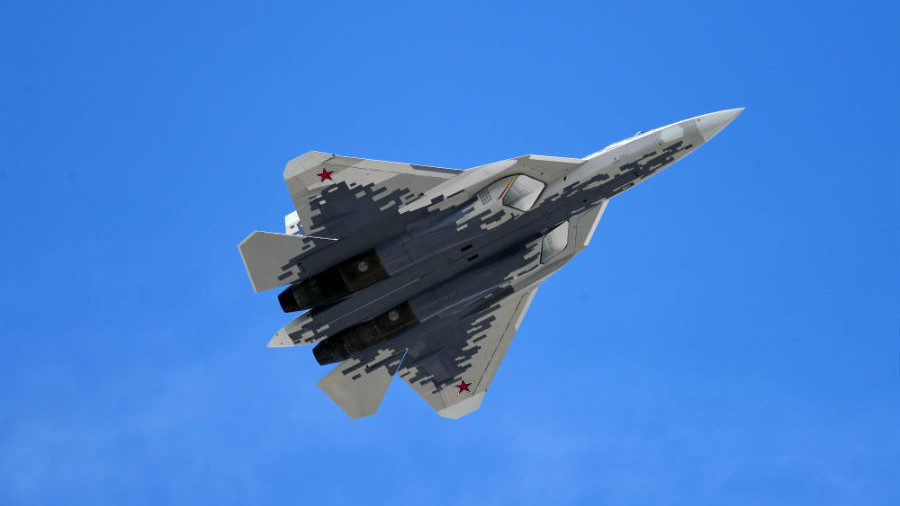

If the J-20's canards are detrimental to a stealthy design, than so is the Su-57's movable LEVCONs...

The F-35 and F-22 both have IR sensor nodes enabling full spherical 360 coverage. The F-22's AN/AAR-56 and F-35's DAS are flush with the aircraft's outer mold. The same however cannot be said of the Su-57's DIRCM nodes...

Finally the engine inlet/intake design. Recent photos of the "first" production version of the Su-57. They show a radar blocker to reduce radar return similar to the F/A-18 Super Hornet...
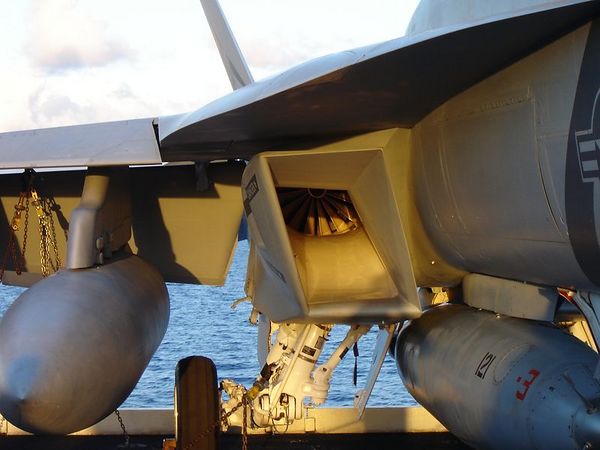

While this is a simple way to reduce visibility of the engine to a radar, it is not the most effect means. The F-22 and F-35 engines are buried deep within the aircraft in complex S (for F-22) and Y (for F-35) intakes. At no point are the engine faces of the F-22 and F-35 visible.
Others have attempted to compare the Su-57's inlet/intake design to the YF-23. The major difference is how much deeper and more curved the YF-23's inlet/intake is.

So NO, the Su-57 DOES NOT take design cues or have similarities to F-22 or YF-23. From a purely visual observation the J-20 has design similar to or same features to F-22 and F-35. The J-20's nose and fuselage look similar to F-22. The J-20 has DSI like the F-35 as well as vertical tail shape. The Su-57 on the other hand looks like a flatened Flanker with IWBs. If I was going to give the Su-57 a NATO code name I would have called it "flapjack".
Last edited by charlielima223 on 07 Jan 2021, 18:41, edited 1 time in total.
- Elite 3K

- Posts: 3069
- Joined: 07 Jun 2012, 02:41
- Location: Singapore
Just wanted to highlight that there is a Su-57 thread and that the J-20 isn't the Su-57.
- Elite 5K

- Posts: 9865
- Joined: 19 Dec 2005, 04:14
I've seen nothing to suggest that the J-20 is not an agile dog fighter. Hell, they said the same thing about the F-35 for ten years. Which, all turned out to be false......
Hell, they could make a "brick" agile today!
Hell, they could make a "brick" agile today!
- Elite 1K

- Posts: 1461
- Joined: 16 Mar 2020, 02:09
Corsair1963 wrote:I've seen nothing to suggest that the J-20 is not an agile dog fighter. Hell, they said the same thing about the F-35 for ten years. Which, all turned out to be false......
Hell, they could make a "brick" agile today!
Well here are ny concerns:
1. The J-20 is a large plane with a huge movement arm. Even with TV, shouldn't this cause the plane to take longer to move its nose than a F-35?
2. Then there isTW ratio. We know the thrust of the Russian engines. And we can debate all day if the J-20 is bigger or smaller than an Su-30. What we also know is that empty spaces (AKA) weapons bays are heavy.
So we are taking a Su-30 sized plane and adding 2 internal bays and Fuel to the mix. Even the Chinese have mentioned that they cant supercruise with the current engine. If it was lighter than an Su-35 we would have Su-35 supercruise performance clean!
Im if the opinion that the plane would have an energy deficit trying to out climb our out turn an F-35.
3. Canards I am not sure how those wobbly canards would do if you pushed them past 50 degrees AOA
I am not an expert, but I am concerned about over loading the large controll surfaces or if they have restrictions.
I just dont see the J-20 going post stall and trying to out climb or out turn the F-35. Remember the F-35 and Even the Super Hornet can go post stall even with no vectoring. There is nothing about this plane that suggests otherwise.
- Elite 5K

- Posts: 9865
- Joined: 19 Dec 2005, 04:14
jessmo112 wrote:Corsair1963 wrote:I've seen nothing to suggest that the J-20 is not an agile dog fighter. Hell, they said the same thing about the F-35 for ten years. Which, all turned out to be false......
Hell, they could make a "brick" agile today!
Well here are ny concerns:
1. The J-20 is a large plane with a huge movement arm. Even with TV, shouldn't this cause the plane to take longer to move its nose than a F-35?
2. Then there isTW ratio. We know the thrust of the Russian engines. And we can debate all day if the J-20 is bigger or smaller than an Su-30. What we also know is that empty spaces (AKA) weapons bays are heavy.
So we are taking a Su-30 sized plane and adding 2 internal bays and Fuel to the mix. Even the Chinese have mentioned that they cant supercruise with the current engine. If it was lighter than an Su-35 we would have Su-35 supercruise performance clean!
Im if the opinion that the plane would have an energy deficit trying to out climb our out turn an F-35.
3. Canards I am not sure how those wobbly canards would do if you pushed them past 50 degrees AOA
I am not an expert, but I am concerned about over loading the large controll surfaces or if they have restrictions.
I just dont see the J-20 going post stall and trying to out climb or out turn the F-35. Remember the F-35 and Even the Super Hornet can go post stall even with no vectoring. There is nothing about this plane that suggests otherwise.
You sound like a guy I know that believes the Su-57 is "stealthy" because it looks like the YF-23. Which, was reported to be even stealthier than the YF-22. Which, became today's F-22A. So, in his mind it's the best Stealth Fighter on the planet...(LOL)
I also remember another guy that saw the F-35 as "fat and chubby". So, no way it could be agile like a Viper or Hornet...In his mind it was nothing more than a Bomb Truck! A modern day stealthy A-7 Corsair....(LOL)
Need I go on.........
- Elite 1K

- Posts: 1461
- Joined: 16 Mar 2020, 02:09
Corsair1963 wrote:jessmo112 wrote:Corsair1963 wrote:I've seen nothing to suggest that the J-20 is not an agile dog fighter. Hell, they said the same thing about the F-35 for ten years. Which, all turned out to be false......
Hell, they could make a "brick" agile today!
Well here are ny concerns:
1. The J-20 is a large plane with a huge movement arm. Even with TV, shouldn't this cause the plane to take longer to move its nose than a F-35?
2. Then there isTW ratio. We know the thrust of the Russian engines. And we can debate all day if the J-20 is bigger or smaller than an Su-30. What we also know is that empty spaces (AKA) weapons bays are heavy.
So we are taking a Su-30 sized plane and adding 2 internal bays and Fuel to the mix. Even the Chinese have mentioned that they cant supercruise with the current engine. If it was lighter than an Su-35 we would have Su-35 supercruise performance clean!
Im if the opinion that the plane would have an energy deficit trying to out climb our out turn an F-35.
3. Canards I am not sure how those wobbly canards would do if you pushed them past 50 degrees AOA
I am not an expert, but I am concerned about over loading the large controll surfaces or if they have restrictions.
I just dont see the J-20 going post stall and trying to out climb or out turn the F-35. Remember the F-35 and Even the Super Hornet can go post stall even with no vectoring. There is nothing about this plane that suggests otherwise.
You sound like a guy I know that believes the Su-57 is "stealthy" because it looks like the YF-23. Which, was reported to be even stealthier than the YF-22. Which, became today's F-22A. So, in his mind it's the best Stealth Fighter on the planet...(LOL)
I also remember another guy that saw the F-35 as "fat and chubby". So, no way it could be agile like a Viper or Hornet...In his mind it was nothing more than a Bomb Truck! A modern day stealthy A-7 Corsair....(LOL)
Need I go on.........
Actually your wrong because we dont have any Classified info on stealth properties of the F-22 or YF-23.
It was stated from the start that the F-35 was somewhere in between a F-16 and an F-18.
The Engine in the Su-30 has been a known quantity for awhile. If Im not mistaken you mayceven have private owners of the Su-27 and engine.
I guess what Im saying is that the thrust from the engine is a known factor. Just like the F-4 or the F-16.
Once you know X+Y= A no matter how you spin it.
We already know X as a known factor for 30+ years now.
The weight is Y. We dont know the exact Y factor, but we know that its not going to be lighter than a Su-30 because it carriers an internal bay. A is also a mystery.
But you can give rough approximations to what the envelope will be like based on orher factors.
Just knowing the engines power you can come up with rough estimates of the planes capability.
Maybe someone smarter than me can help start a new thread. Either way, Im assuming it will perform like a combat loaded Su-30. Why? Because
A. Im making a Guess that it weighs as much as a Su-30 or greater. (There is no way its lighter)
B. Its always in combat configuration because of the bay.
Who is online
Users browsing this forum: No registered users and 10 guests
